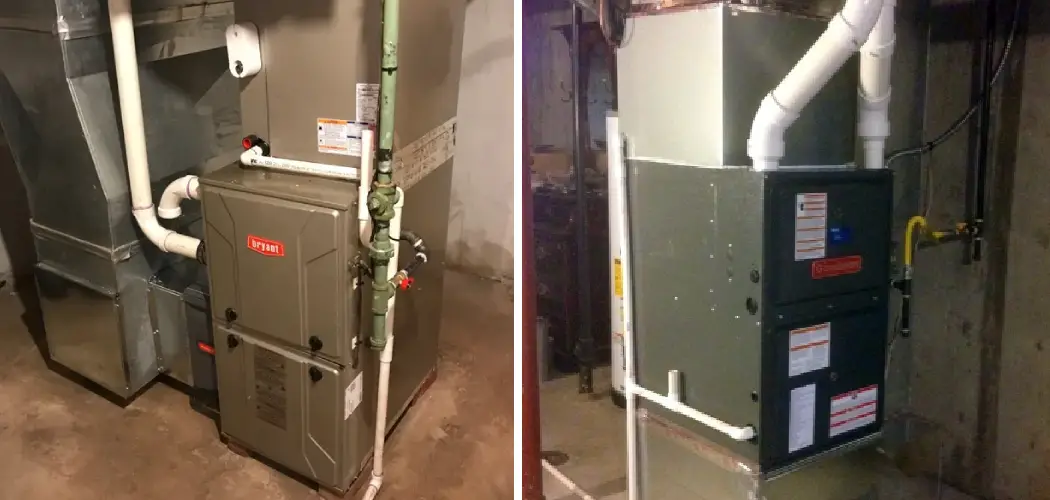Are you thinking of installing a gas furnace in your home? Installing a gas furnace is more complicated than it may seem. With the right tools and knowledge, you can easily install a gas furnace yourself and save money on professional installation fees.
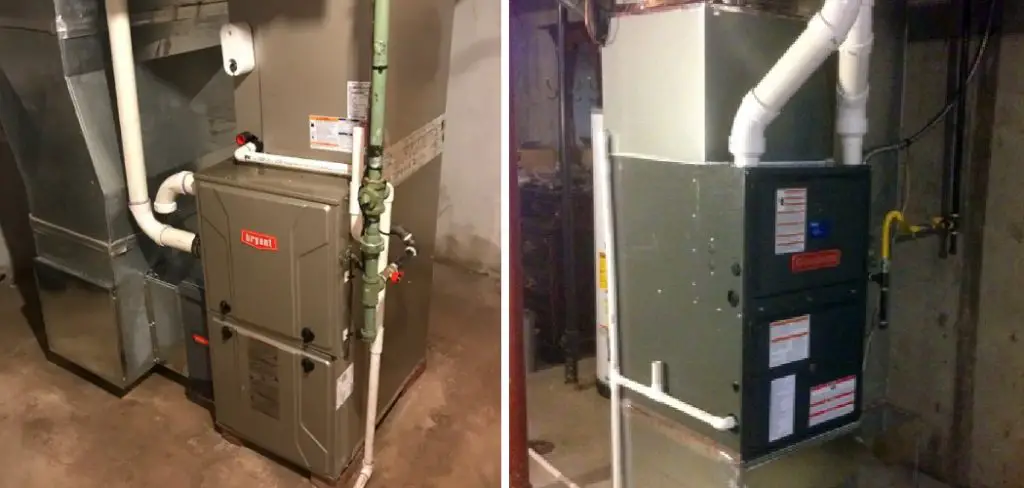
Installing a gas furnace in your home can provide efficient and reliable heating for years to come. However, it’s crucial to understand that the process involves specific steps requiring technical knowledge, adherence to safety guidelines, and professional assistance in many cases.
‘This guide on how to install a gas furnace, aims to outline the foundational steps involved in the installation process, from selecting the right furnace for your space to connecting the gas line safely. Keep in mind, that proper installation is vital not only for the furnace’s performance but also to ensure the safety of your household.
What are the Benefits of Installing a Gas Furnace?
Before diving into the installation process, it’s essential to understand why choosing a gas furnace is an excellent option for heating your home. Here are some benefits of installing a gas furnace:
- Energy Efficiency: Gas furnaces are highly energy-efficient and can save you money on your monthly utility bills.
- Reliable Heating: With a gas furnace, you can expect consistent and reliable heating throughout your home.
- Lower Operating Costs: Gas furnaces have lower operating costs than electric furnaces, making them a cost-effective option in the long run.
- Long Lifespan: With proper maintenance, a gas furnace can last 15-20 years, providing dependable heating for many winters.
These are just a few of the many benefits of installing a gas furnace in your home. Now, let’s move on to the steps involved in the installation process.
What Will You Need?
Before beginning the installation process, gathering all the necessary tools and equipment is essential. Here are some basic items you will need:
- Gas furnace unit
- Ductwork (if required)
- Vent pipes
- Gas line kit
- Screwdriver
- Wrenches
- Level
- Pipe cutter or hacksaw
- Drill and drill bits
With these tools and equipment ready, you can now move on to the installation process.
10 Easy Steps on How to Install a Gas Furnace
Step 1. Choose the Right Location:
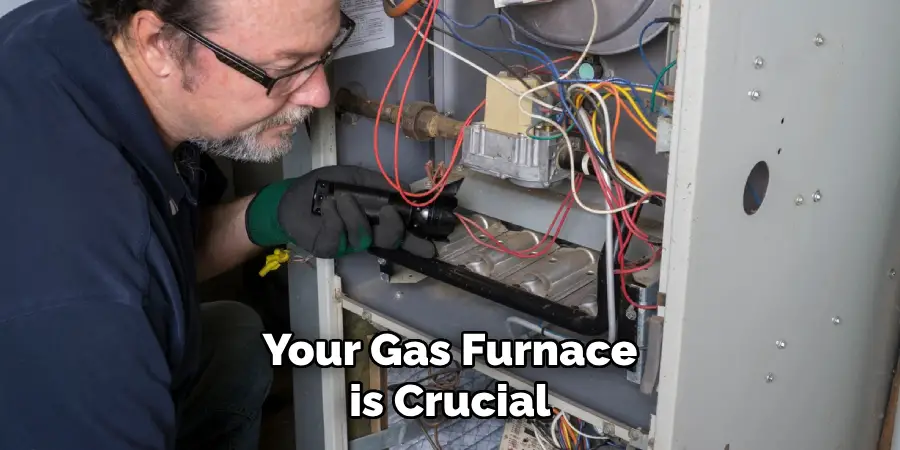
Selecting an appropriate location for your gas furnace is crucial. It should be placed in a well-ventilated area, preferably in a basement or utility room, to ensure adequate airflow and to facilitate exhaust venting.
Ensure the location allows easy access to the gas line and electrical supply. Additionally, the furnace should be placed on a raised platform or concrete blocks to prevent it from getting wet in case of flooding.
Step 2. Measure and Prepare the Ductwork:
Before installing the furnace, it’s essential to prepare the ductwork correctly. Measure the space to determine the size of ductwork needed. If you’re replacing an old furnace, you can often use the existing ductwork, but ensure it’s in good condition and appropriately sized for the new unit.
If new ductwork is required, sketch a layout that efficiently distributes air throughout your home, considering both supply and return air ducts. Cut and assemble the duct sections, using screws and duct tape to secure connections. Properly sealed and insulated ductwork is crucial for efficient heating and can significantly reduce energy costs.
Step 3. Install the Vent Pipes:
Proper venting is essential for the safe operation of your gas furnace. Determine the type of venting system your furnace model requires—whether it’s a direct vent, natural vent, or sidewall vent system. Drill a hole through the external wall of your home for the vent pipe if you’re using a direct or sidewall vent system.
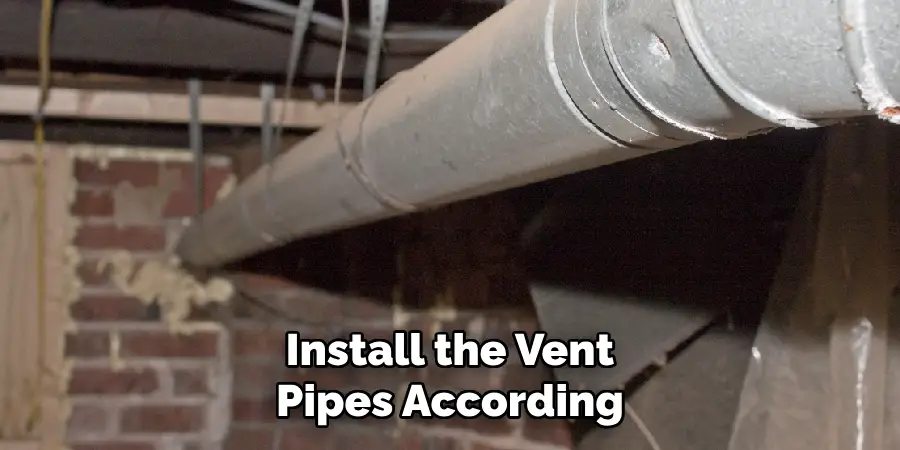
Ensure there are no obstructions and that the location complies with local building codes regarding vent placement. For a natural vent system, make sure it connects securely to your chimney. Install the vent pipes according to the manufacturer’s instructions, ensuring they are secure and properly sealed to prevent gas leaks or backdrafts.
Step 4. Connect the Gas Line:
Connecting the gas line to your new furnace is a critical step that must be done with precision to ensure safety. Turn off the gas supply to your home before beginning the installation. If you’re not experienced in handling gas lines, consider hiring a professional to do this part. Use a wrench to connect the gas line kit to the furnace, ensuring all connections are tight and secure to prevent leaks.
After the connection is complete, apply a leak detection solution to all joints and connections to test for leaks. If there are no bubbles or signs of gas escaping, you can turn the gas supply back on. Always follow local codes and regulations regarding gas connections, and if in doubt, consult with a professional.
Step 5. Connect Electrical Supply:
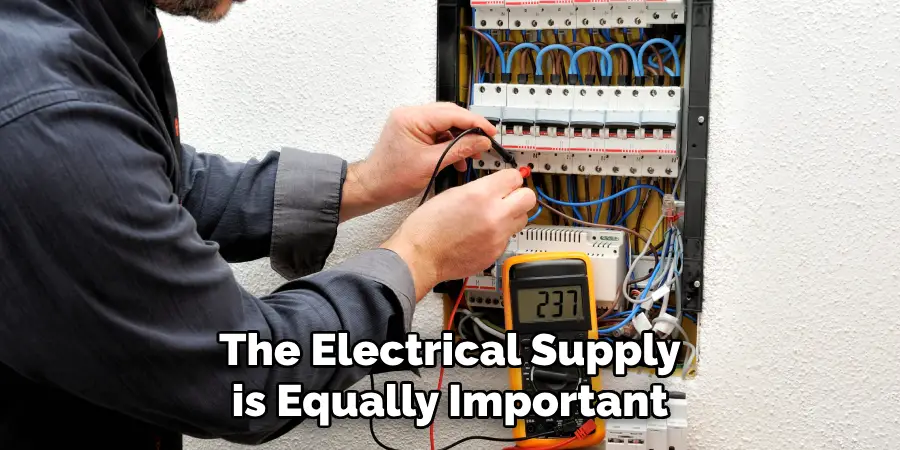
Wiring your gas furnace to the electrical supply is equally important for its functionality. Ensure the power supply to your working area is turned off before beginning. Refer to the furnace’s installation manual for wiring diagrams and instructions specific to your model. Typically, you’ll need to connect the power cord to the furnace’s terminal box and secure it with clamps.
Then, route the other end to your home’s circuit breaker or fuse box, connecting it to an appropriate circuit. Use wire nuts to make secure connections and ensure all wiring complies with local electrical codes. After completing the wiring, check all connections are tight and secure before restoring the power supply.
Step 6. Install the Thermostat:
If you haven’t already got a thermostat installed, or if the existing one is not compatible with your new gas furnace, installing a new thermostat is the next step. Choose a location for your thermostat that is away from drafts, direct sunlight, doorways, windows, and furniture that could block natural air circulation.
Most thermostats require a 24-volt electrical connection, which can be run from the furnace to the thermostat location. Follow the manufacturer’s instructions for wiring the thermostat to ensure correct installation. After installing, make sure to program your thermostat according to your heating preferences to maximize energy efficiency and comfort.
Step 7. Test the System:
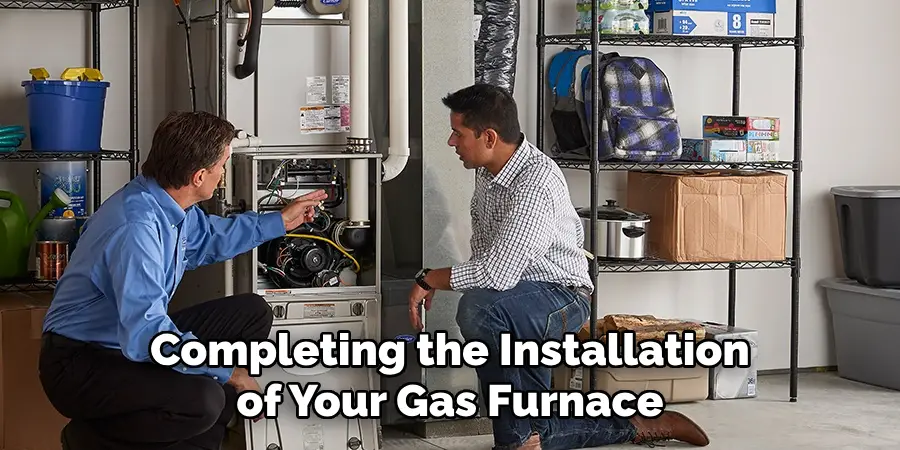
After completing the installation of your gas furnace, including the thermostat and electrical connections, it’s crucial to test the system to ensure everything operates as it should. Start by turning on the power supply and gas supply to the furnace. Set your thermostat to “heat” mode and adjust the temperature to initiate the heating cycle.
Observe the furnace as it starts to ensure the ignition process works correctly and that the furnace begins to produce heat. Listen for any unusual noises and smells of gas to detect possible leaks. Review your installation steps or consult a professional if the furnace does not operate correctly. Testing the system helps guarantee the safety and efficiency of your heating system.
Step 8. Finalize the Installation:
Once you’ve tested the system and confirmed everything is working correctly, the next step is to finalize the installation. This involves securing the furnace in place, if not already done, and ensuring all vent pipes and ductwork are firmly attached and sealed to prevent energy losses. Double-check the gas and electrical connections to ensure they are tight and comply with local building regulations.
Install any remaining components, such as air filters or humidifiers, according to the manufacturer’s instructions. It’s also essential to document your installation process, keeping a record of all model numbers, installation dates, and any adjustments made during the process for future reference or maintenance.
Step 9. Schedule an Inspection:
After finalizing the installation of your gas furnace, scheduling an inspection with your local building department is a vital next step. Many municipalities require a professional inspection of new furnace installations to ensure they meet all safety and building codes. Contact your local building department to arrange for an inspector to evaluate your installation.
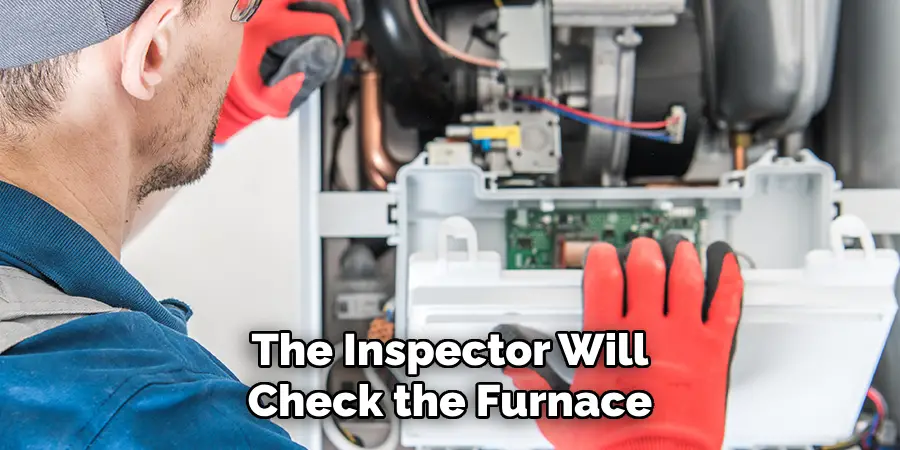
During the inspection, the inspector will check the furnace, ductwork, gas, and electrical connections to ensure everything has been installed correctly and safely. This step is crucial for your safety and the integrity of your home’s heating system. Passing the inspection can also provide peace of mind, knowing your furnace is up to code and ready to provide warm, efficient heating for your home.
Step 10. Perform Regular Maintenance:
Maintaining your new gas furnace is essential for ensuring it operates efficiently and safely over its lifespan. Regular maintenance typically includes checking and replacing the air filter every 1-3 months, inspecting the venting system for blockages, and ensuring all electrical and gas connections remain tight and secure.
Additionally, schedule annual inspections with a qualified technician who can perform more in-depth checks, such as testing the furnace’s combustion process, inspecting the heat exchanger for cracks, and ensuring the blower motor and its components are in good working order. Keeping a maintenance log with dates of checks and services can help track the furnace’s condition and ensure timely upkeep.
By following these steps and ensuring proper installation, maintenance, and inspections, you can enjoy the comfort of a well-functioning gas furnace for years to come.
5 Additional Tips and Tricks
- Thoroughly Review Your HVAC System Layout: Before beginning the installation, it is crucial to understand the overall layout of your HVAC system. This includes the placement of your furnace, ductwork, and any additional HVAC components. A clear understanding of the system layout will help ensure a smooth installation process and optimal operation of your furnace.
- Use a Carbon Monoxide Detector: Safety should be your top priority when installing a gas furnace. Installing a carbon monoxide detector nearby can alert you to any potential leaks or issues with the combustion process, ensuring the safety of your household.
- Ensure Proper Ventilation: Correct ventilation is key to the efficient and safe operation of your gas furnace. Ensure that the vent pipes are correctly sized and installed and lead to the outdoors to prevent any hazardous backflow of gases into your home.
- Be Prepared for Future Upgrades: When installing your furnace, consider any potential future upgrades or changes to your HVAC system. Ensure there is enough space around the furnace for maintenance and possible upgrades, such as adding air purification systems or humidifiers.
- Understand and Utilize the Furnace’s Self-Diagnostics: Many modern gas furnaces come equipped with self-diagnostic systems that can help troubleshoot and identify any issues with the furnace. Familiarize yourself with these features, as they can save time and effort in identifying and resolving any problems that may arise during or after installation.
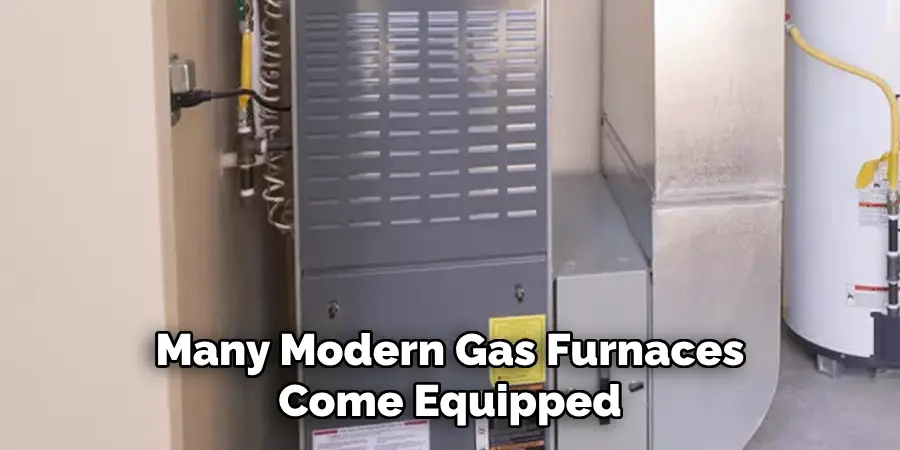
By incorporating these additional tips and tricks into your installation process, you can enhance the efficiency, safety, and longevity of your gas furnace.
6 Things You Should Avoid When Installing a Gas Furnace
- Ignoring Local Codes and Regulations: One of the biggest mistakes you can make is not adhering to your local building codes and regulations. These guidelines are in place for safety and efficiency reasons. Ignoring them can lead to dangerous installations and may void your furnace warranty.
- Overlooking Ventilation Requirements: Proper ventilation is crucial for the safe operation of your gas furnace. Avoid neglecting the manufacturer’s instructions on venting. Incorrect venting can lead to carbon monoxide buildup, posing a serious health risk.
- Skipping the Professional Inspection: While it might seem like an unnecessary step, skipping the professional inspection can be a costly mistake. An inspection ensures your installation meets all safety standards and can prevent future problems.
- Using Mismatched or Incorrect Components: All components of your gas furnace and HVAC system must be compatible. Using mismatched or incorrect components can lead to inefficient operation, increased wear and tear, and even safety hazards.
- Poor Gas Line Connections: Gas leaks are among the most dangerous risks of an improperly installed furnace. Ensure all gas line connections are secure and leak-tested. Using the wrong materials or failing to properly seal connections can lead to leaks and potential explosions.
- Improperly Sizing the Furnace: Installing a furnace that is too big or too small for your home’s heating needs can lead to inefficient operation, frequent breakdowns, and increased energy costs. It is essential to properly size the furnace according to your home’s square footage, insulation, and climate.
By avoiding these common pitfalls, you can ensure a safer, more efficient furnace installation that will serve your home well for years to come.
What Are the Disadvantages of a Gas Furnace?
While gas furnaces offer many benefits, there are a few potential disadvantages to consider:
- Higher Upfront Cost: The initial cost of purchasing and installing a gas furnace can be higher compared to other heating options. However, the long-term energy savings can help offset this cost.
- Dependence on Natural Gas: Gas furnaces require access to natural gas lines, which may not be available in all areas. This can limit the options for homeowners who prefer an alternative fuel source.
- Risk of Carbon Monoxide Leaks: As mentioned earlier, gas furnaces carry a risk of carbon monoxide leaks if they are not installed or maintained properly. However, with proper installation and maintenance, this risk is minimized.
- Potential for High Repair Costs: If your gas furnace experiences any issues, the cost of repairs can be high. It is important to properly maintain your furnace to prevent these costly problems.
Overall, the benefits of a gas furnace far outweigh the potential disadvantages, making it a popular and reliable choice for home heating.
What is the Significance of Annual Maintenance for a Gas Furnace?
Annual maintenance is essential for the proper functioning and longevity of your gas furnace. It provides several significant benefits:
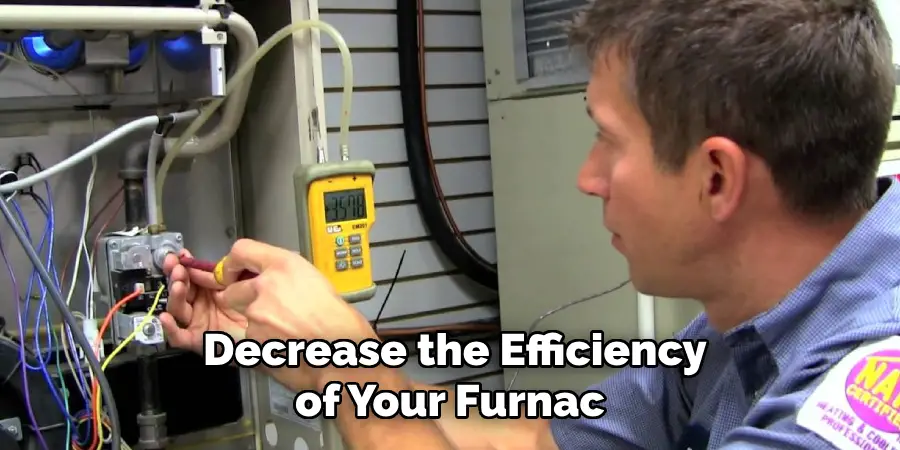
- Ensures Efficient Operation: Regular maintenance can help prevent any issues that may decrease the efficiency of your furnace, saving you money on energy bills.
- Identifies Potential Problems Early: During annual inspections, a qualified technician can identify and address any minor issues before they become major, costly problems.
- Extends the Lifespan of Your Furnace: Proper maintenance can help extend the lifespan of your gas furnace, saving you money on premature replacements.
- Improves Indoor Air Quality: Regular maintenance includes cleaning or replacing air filters, which helps improve indoor air quality and prevent dust and allergens from circulating in your home.
- Maintains Safety: Annual maintenance includes a thorough inspection of all components, ensuring safe operation and reducing the risk of carbon monoxide leaks or other hazards.
In conclusion, annual maintenance is crucial for keeping your gas furnace operating safely and efficiently, saving you money in the long run.
Conclusion
How to install a gas furnace involves careful planning, adherence to local codes and guidelines, and attention to the specific requirements of your HVAC system. By following the outlined steps and avoiding common pitfalls, homeowners can ensure a successful and safe furnace installation. It’s crucial to prioritize proper ventilation, correct component usage, and professional consultations.
Beyond installation, annual maintenance is imperative for the efficient operation, longevity, and safety of the unit. While the process might seem complex, the rewards of warmth, comfort, and energy efficiency in your home make it a worthwhile endeavor.
Remember, when in doubt, always consult with a professional to guarantee that your gas furnace installation meets all safety and operational standards.

